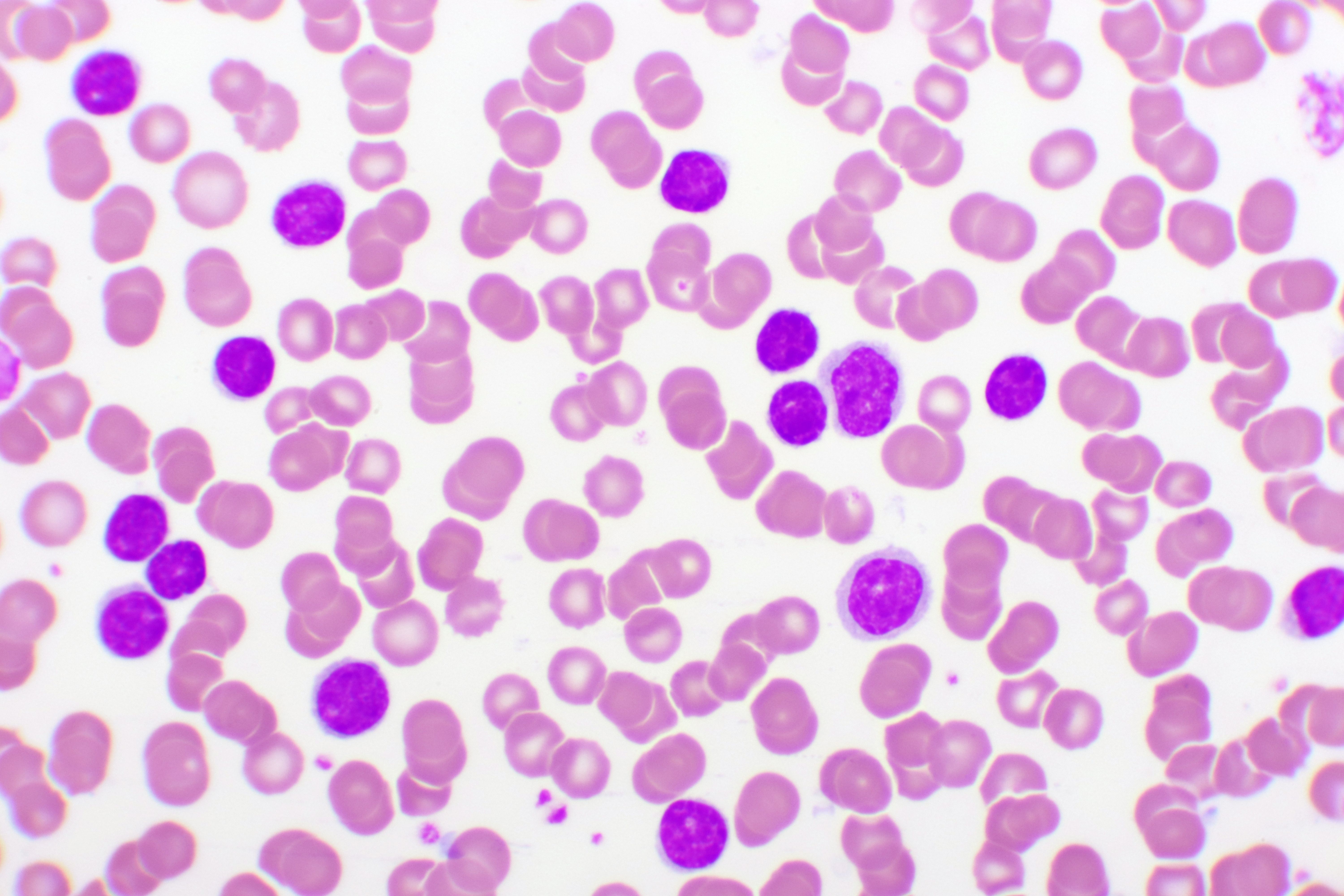News
Article
Ibrutinib Safe and Effective in Patients With CLL/SLL, Real-World Data Show
Author(s):
Key Takeaways
- Ibrutinib shows high overall survival rates in Japanese patients with newly diagnosed and relapsed/refractory CLL.
- Adverse events, such as bleeding and atrial fibrillation, led to dose adjustments and treatment discontinuations in some patients.
The long-term safety of ibrutinib was proven in patients with newly diagnosed or relapsed or refractory (R/R) chronic lymphocytic leukemia (CLL) and small lymphocytic lymphoma (SLL).
Overall survival rates for ibrutinib as treatment for patients with newly diagnosed (1L) chronic lymphocytic leukemia (CLL) was 90.8%, and 83.7% for patients with relapsed or refractory (R/R) CLL after 3 years, according to a retrospective study in the International Journal of Hematology.1
The study included 246 Japanese patients 20 years and older with a median follow-up of 35.7 months. Patients’ median age was 73 years and 60.8% were male. The progression-free survival rate was 80.9% for the newly diagnosed CLL group, and 67.2% for the R/R CLL cohort.
“These findings confirm the long-term, real-world effectiveness and safety of ibrutinib for the treatment of Japanese patients with newly diagnosed or RR CLL/SLL,” the authors wrote.
Future research should examine real-world management of AEs of special interest during ibrutinib treatment, researchers say. | Image credit: CLShebley – stock.adobe.com

CLL/SLL is uncommon in Asia, with roughly 0.2 per 100,000 people in Asia having the condition compared with 3.5 per 100,000 people in the US. Compared with European populations, Japanese patients are more likely to have a mutation in the immunoglobulin heavy chain variable region gene and less likely to possess the 17p deletion. The study contributes data around Japanese patients’ tolerance of ibrutinib; existing large randomized controlled trials have not typically included Japanese patients.
Adverse events (AEs) found in patients in the study with a score of 3 or higher on the Common Terminology Criteria for Adverse Events (CTCAE) scale included:
- Bleeding (3.8%)
- Second primary malignancy (2.5%)
- Atrial fibrillation (2.1%)
- Herpesvirus infection, fungal infection, or Pneumocystis jiroveci pneumonia (1.7%)
More than 1 in 10 patients had died by the end of the observation period. In just over half the cohort (53%), ibrutinib treatment was ongoing after a median follow-up of 35.7 months. For patients who discontinued ibrutinib treatment, the most common reason was because of AEs (22.2%). Additionally, the initial ibrutinib dose had been lowered in more than a quarter of the cohort, most commonly due to “AE avoidance,” according to the study.
The most common prior treatment lines for the R/R CLL group included fludarabine (23.4%), cyclophosphamide (13.8%), and bendamustine + rituximab (10.6%). Atrial fibrillation was observed in 21 patients during ibrutinib treatment, none of which had it before, and 18 of these cases were deemed drug-related. Nine patients experienced major bleeding—with a grade of 3 or higher—including 4 in the 1L CLL cohort and 5 in the R/R CLL cohort.
The study authors noted that 3.5% patients in the 1L CLL cohort had an Eastern Cooperative Oncology Group performance status (ECOG PS) of 2 compared with the patient population in a large randomized controlled trial known as RESONATE-2, which reported 8.6% of patients with an ECOG PS of 2. The RESONATE-2 study included 391 patients and found that ibrutinib performed better than ofatumumab in terms of progression-free survival and OS.2 Overall response rates were lower in this study compared with RESONATE-2, with 76.6% for the 1L CLL group and 68.5% for the R/R CLL group compared with 92% in the RESONATE-2 study. The study authors hypothesized that the difference could be attributed to insufficient response assessments in the Japanese study.1
“The current study found that the real-world effectiveness of ibrutinib treatment in the 1L CLL cohort was consistent with that reported in the RESONATE-2 RCT in previously untreated patients, with 24 and 36-month PFS rates of 85.4% and 80.9% in Orbit versus 89% at 24 months in RESONATE-2 and 24-month OS rates of 95.7% versus 95%,” the authors wrote.
They also suggested future research should examine “real-world management of adverse events of special interest during ibrutinib treatment,” such as infections, atrial fibrillation and second primary malignancy in Japanese patients because of these patients’ differences in cerebrovascular and cardiovascular diseases compared with US and European populations.
References
- Muta T, Masamoto Y, Yamamoto G, et al. Real-world effectiveness and safety of ibrutinib in patients with chronic lymphocytic leukemia in Japan: the Orbit study. Int J Hematol. Published online November 26, 2024. doi: 10.1007/s12185-024-03875-0
- Burger JA, Tedeschi A, Barr PM, Robak T, Owen C, Ghia P, et al. Ibrutinib as initial therapy for patients with chronic lymphocytic leukemia. N Engl J Med. 2015;373(25):2425–37. doi: 10.1056/NEJMoa1509388





